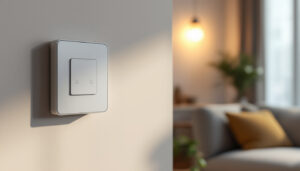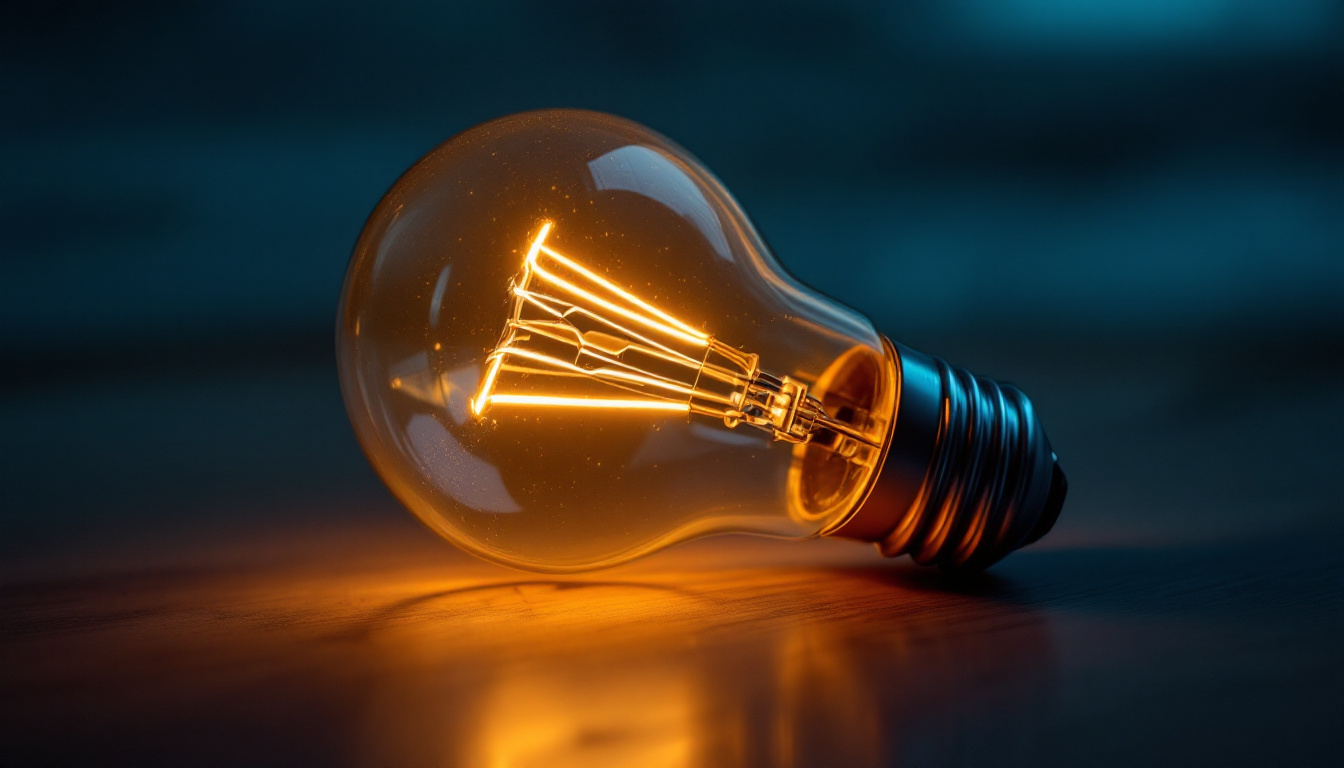

In the realm of lighting technology, LEDs have revolutionized the way we illuminate our spaces. Understanding how the first LEDs functioned not only provides insight into their evolution but also equips lighting contractors with essential knowledge for modern applications. This article serves as a comprehensive checklist for lighting contractors, detailing the fundamentals of LED technology, its historical context, and practical considerations for implementation.
Light Emitting Diodes (LEDs) have their roots in semiconductor technology. Initially, these devices were developed as indicators and simple light sources. The first LEDs emitted low-intensity infrared light, which was primarily used in remote controls and other electronic devices. Over time, advancements in materials and engineering led to the development of visible light LEDs, paving the way for their widespread adoption.
At the heart of LED technology lies the semiconductor. When a semiconductor material, such as gallium arsenide, is infused with impurities, it creates a p-n junction. This junction is critical for LED operation. When an electric current passes through the diode, electrons recombine with holes, releasing energy in the form of photons — the fundamental particles of light. This process is known as electroluminescence.
The efficiency of this process is highly dependent on the materials used and the quality of the semiconductor structure. Researchers have dedicated significant effort to refining the purity of semiconductor materials and optimizing the crystal growth processes. Innovations such as metal-organic chemical vapor deposition (MOCVD) have enabled the production of high-quality crystals, which in turn enhance the performance and longevity of LEDs. As a result, modern LEDs are not only brighter but also more energy-efficient compared to their predecessors.
The transition from infrared to visible light was a significant milestone in LED development. Early LEDs were limited to red and infrared wavelengths, which restricted their applications. However, the introduction of new materials, such as gallium phosphide and indium gallium nitride, allowed for the creation of LEDs that emitted a broader spectrum of colors, including blue and green. This breakthrough opened up new possibilities for lighting applications.
With the advent of blue and green LEDs, the potential for creating white light became a reality. By combining red, green, and blue (RGB) LEDs, manufacturers could produce white light that closely mimics natural daylight. This innovation has transformed various industries, from general lighting in homes and offices to specialized applications in horticulture and medical therapies. Furthermore, the ability to produce different colors of light has led to the rise of dynamic lighting systems, where colors can be adjusted to enhance mood or ambiance, showcasing the versatility and creative potential of LED technology.
LEDs have become the preferred choice for lighting solutions due to their numerous advantages over traditional incandescent and fluorescent bulbs. Understanding these benefits is crucial for lighting contractors when recommending solutions to clients.
One of the most compelling reasons for the widespread adoption of LEDs is their energy efficiency. LEDs consume significantly less power compared to traditional lighting options. This efficiency translates into lower energy bills for consumers and reduced environmental impact. For lighting contractors, promoting energy-efficient solutions can enhance client satisfaction and contribute to sustainability goals. Furthermore, the reduced energy consumption of LEDs means that they generate less heat, which not only improves comfort in indoor environments but also decreases the load on air conditioning systems, leading to additional savings on energy costs.
LEDs have an impressive lifespan, often lasting tens of thousands of hours. This longevity reduces the frequency of replacements, making them a cost-effective choice in the long run. Additionally, LEDs are more durable than traditional bulbs, as they are less susceptible to breakage and can withstand harsh conditions. For contractors, this means fewer service calls and happier clients. The rugged nature of LEDs also allows them to perform reliably in extreme temperatures and varying humidity levels, making them ideal for outdoor applications and challenging environments, such as industrial settings or unconditioned spaces.
The compact size of LEDs allows for innovative design possibilities. They can be integrated into various fixtures and applications, from residential lighting to commercial displays. This versatility enables contractors to create customized lighting solutions that meet specific client needs. Understanding the design potential of LEDs is essential for maximizing their impact in any project. Additionally, the ability to produce a wide range of colors and color temperatures provides designers with the tools to create mood-enhancing environments, whether it’s a warm, inviting glow for a cozy living room or bright, vibrant light for a retail space. This adaptability not only caters to aesthetic preferences but also enhances functionality, allowing for tailored lighting schemes that can improve productivity in workspaces or create ambiance in hospitality settings.
While LEDs offer numerous advantages, proper installation is crucial to ensure optimal performance. Lighting contractors must be aware of several key factors during the installation process.
Although LEDs generate less heat than traditional bulbs, they still produce some heat that must be managed effectively. Poor heat dissipation can lead to reduced efficiency and a shorter lifespan. Contractors should consider using heat sinks and ensuring adequate ventilation in fixtures to maintain optimal operating temperatures. Additionally, the placement of LED fixtures can significantly influence heat management; for instance, installing LEDs in enclosed spaces without proper airflow can exacerbate heat buildup. It is also beneficial to regularly check the thermal performance of the installation, especially in high-usage areas, to prevent any long-term issues.
LEDs require a compatible driver to regulate the electrical current. Selecting the right driver is essential for achieving the desired brightness and color temperature. Contractors should evaluate the specifications of the LED products and match them with appropriate drivers to ensure seamless operation. Understanding the relationship between LEDs and their drivers is critical for successful installations. Furthermore, it is important to consider the efficiency of the driver itself, as a poorly performing driver can negate the energy savings that LEDs provide. Contractors should also be aware of the different types of drivers available, such as constant current and constant voltage drivers, and choose the one that best fits the specific application to maximize performance and reliability.
The landscape of LED technology continues to evolve, with new advancements on the horizon. For lighting contractors, staying informed about these trends is vital for remaining competitive in the industry.
The integration of smart technology into LED lighting systems is gaining traction. Smart LEDs can be controlled remotely, allowing users to adjust brightness, color, and scheduling through mobile apps or voice commands. This trend enhances user convenience and energy management, making it an attractive option for clients. Contractors should familiarize themselves with smart lighting solutions to offer cutting-edge services. Furthermore, the rise of the Internet of Things (IoT) has paved the way for interconnected lighting systems that can communicate with other devices in a home or office. This interconnectivity not only improves energy efficiency but also allows for innovative features such as automated lighting adjustments based on occupancy or time of day, creating a more responsive and personalized lighting experience.
Human-centric lighting focuses on creating environments that support human well-being and productivity. This approach considers factors such as color temperature and intensity, mimicking natural light patterns. As awareness of the impact of lighting on health grows, contractors may find increased demand for human-centric solutions. Understanding the principles of this approach can enhance the value offered to clients. Additionally, research has shown that exposure to specific light wavelengths can influence mood, alertness, and even sleep patterns. By incorporating human-centric designs, contractors can help create spaces that not only look aesthetically pleasing but also foster improved mental health and productivity, making them invaluable partners in the design and construction process.
To ensure successful LED installations and client satisfaction, lighting contractors can utilize the following checklist. This practical guide covers essential considerations from planning to execution.
Understanding the origins and workings of LEDs is essential for lighting contractors aiming to deliver high-quality solutions. By grasping the fundamental principles of LED technology, recognizing its advantages, and adhering to best practices during installation, contractors can position themselves as trusted experts in the field. As the lighting industry continues to evolve, embracing new trends and technologies will further enhance the ability to meet client needs and expectations.
With this checklist in hand, lighting contractors are well-equipped to navigate the complexities of LED installations and contribute to a brighter, more sustainable future.
Ready to elevate your lighting installations with the best in LED technology? At LumenWholesale, we provide lighting contractors like you with the highest quality, spec-grade lighting products at prices that can’t be beaten. Say goodbye to local distributor markups and hello to a vast selection of reliable, high-performance lighting that meets the strictest industry standards. Plus, with free shipping on bulk orders, you can stock up on premium lighting solutions without worrying about hidden fees. Don’t compromise on quality or value—choose LumenWholesale for a seamless blend of affordability and convenience. Wholesale Lighting at the Best Value is just a click away.

Discover effective strategies for training your team in lighting with Hi Lite Lighting.

Discover the essential insights lighting contractors need to know about wafer lights.

Discover essential insights into Bluetooth control systems tailored for lighting contractors.

Discover why lighting contractors should prioritize light molding in their projects.
Get notified when NEW deals are released.
Optimize your budget with wholesale discounts.
Only top-quality, specification-grade lighting products.
No additional costs at checkout - what you see is what you pay.
We understand the unique needs of contractors.